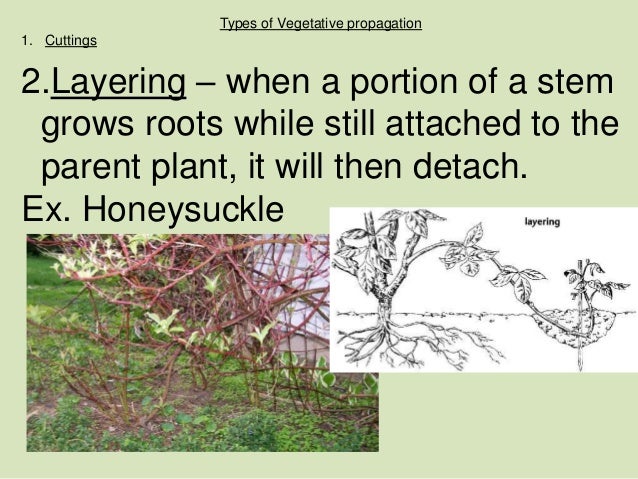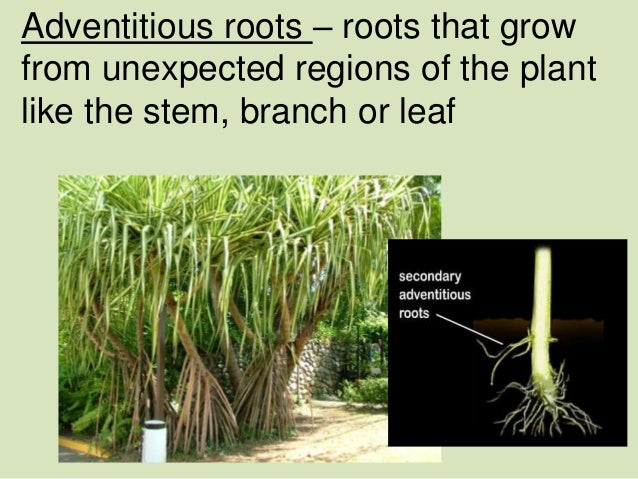Plants are essential to all life on Earth. They are special because they are able to make their own food by a process called photosynthesis where they take carbon dioxide from the atmosphere and turn it into sugar. The sugars can then be used for energy for growth and many more functions but the plant material provides the basis of almost all food chains.
- Biology Ch.4plant Systemsmr.'s Learning Website -
- Biology Ch.4plant Systemsmr.'s Learning Website Free
- Biology Ch.4plant Systemsmr.'s Learning Website Answer
Plants include a range of different groups that can all photosynthesize but can be very different physically and genetically. Included in the plant kingdom are the flowering plants or angiosperms, the gymnosperms – woody plants without flowers but with seed and cones, the ferns, lycophytes – similar to ferns but only have a single vein through each leaf, the bryophytes (mosses, hornworts and liverworts), and some algae.
All plants that grow flowers and fruit belong to the group known as the angiosperms. They the most advanced, diverse and abundant group of plants in the world and include around 200,000 plant species.
Biology 2 plants. Terms in this set (78) cuticle. A waxy layer that covers the non woody, aboveground parts of most plants. Lets plants exchange oxygen and carbon dioxide. Synthetic biology is a new discipline that seeks to enable the predictable engineering of biological systems. According to one conception of synthetic biology, proteins and genetic regulatory elements are modular and can be combined in a predictable manner. In practice however, assembled genetic devices do not function as expected. A net C flux was computed, but is incomplete, because rice CH 4, plant and animal waste CH 4 and CO 2, and soil-atmosphere C fluxes could not be estimated from the census data. Additionally, agriculture’s net contribution to atmospheric C was found to depend critically on the boundaries of the analysis.
Biology Ch.4plant Systemsmr.'s Learning Website -
Gymnosperms are a group of woody, vascular plants with seeds but without flowers or fruit. The seeds of gymnosperm plants sit exposed on cones rather than enclosed in a fruit as they are with angiosperm plants.
Ferns and lycophytes are two groups of vascular plants without wood, seeds or flowers. They include over 12,000 species from ancient groups that once dominated the forests in many parts of the world.

The non-vascular plants include mosses, hornworts and liverworts and some algae. They are generally small plants limited in size by poor transport methods for water, gases and other compounds.
Plant physiology encompasses the study of plant form and function. As plants evolved to life on land they were required to evolve methods to extract CO², light, and water from the atmosphere and soil.
FREE 6-Week Course

Enter your details to get access to our FREE 6-week introduction to biology email course.
Learn about animals, plants, evolution, the tree of life, ecology, cells, genetics, fields of biology and more.
Information Processing/Signal Transduction| How do plants detect, process, and interpret information from the environment? | - Construct a representation of a molecular receptor for a physical or biological signal that clearly shows how the signal is detected and how information is conveyed from the receptor to the plant cell.
- Compare and contrast a signaling pathway that leads to the activation of a cytosolic enzyme and a pathway leading to changes in gene expression.
- Choose a stimulus that has an immediate response in a plant and a stimulus that results in a response days or weeks later; compare and contrast the information processing in the two examples.
- Diagram how a signal from a plant is perceived and acted upon by another plant.
- Compare and contrast how a plant detects, processes, and interprets information from an herbivore and a pathogen.
- Provide examples of how herbivory alters plant growth.
|

Evolution, Natural Selection and Adaptation| What evidence shows that different species are related? | show - Using gene trees, support the argument that plants have many genes and gene families in common with all other organisms.
- Analyze the structural and biochemical evidence for the claim that a single endosymbiotic event between a eukaryotic cell and a cyanobacterium was ancestral to all chloroplasts, including chloroplasts in algal groups.
- Formulate an evolutionary hypothesis that accounts for the both the similarities and differences among the chloroplasts of red algae, brown algae, green algae, and land plants, including differences in the number of membranes.
- Draw a generic plant life cycle indicating the role of meiosis and mitosis in establishing multicellular haploid and multicellular diploid stages.
- Contrast the relative size of the multicellular haploid stage in mosses, ferns, and angiosperms.
- Use a computational phylogenetic tool and DNA sequences of one or more genes to predict the evolutionary relationships among major plant clades or between plants and other organisms.
|
| How does variation among plants affect survival and reproduction? | - Compare the relative contributions of recombination, mutation, hybridization, and polyploidy to plant diversity.
- Explain the biological constraints for hybridization and polyploidy to successfully increase plant diversity.
- Explain how epigenetic phenomena such as DNA methylation and histone modification lead to phenotypic variation among plants that are otherwise genetically identical.
- For various species that exhibit a range of diversity, predict some possible outcomes of expansion of their distribution due to climate change.
- If a new pathogen or herbivore is introduced, predict possible outcomes for a plant species, relative to its diversity.
- Categorize symbiotic relationships that have adapted plants to life in a terrestrial environment.
- Compare strategies that have evolved for population migration and dispersal in mosses, ferns, gymnosperms, and angiosperms.
- Select and evaluate an adaptation in plants for retaining water while facilitating gas exchange.
- For an aquatic plant, select, and evaluate an adaptation for retaining gases needed for photosynthesis.
- Compare structures and their modifications in desert plants from the southwestern U.S. and South Africa.
|
Organization of Matter and Energy Flow| How do plants obtain and use matter and energy to live and grow? | - Create a diagram showing how inorganic carbon is assimilated into organic compounds in plants and overlay this with the flow of energy through the plant.
- Trace the path of movement of inorganic nutrients from soil into the aboveground part of the plant.
- Compare the roles of mycorrhizae and root nodules in the uptake of inorganic materials in plants.
- Identify the two inorganic molecules that are used to produce the majority of a plant’s mass, and indicate their sources.
- Explain how the availability of soil microorganisms has supported or limited the growth of economically important plants.
- For a terrestrial ecosystem, analyze the flow of energy among organisms.
- Explain why plants can grow in a closed terrarium.
- Choose a class of organic compounds other than sugars and, in general terms, explain the carbon and energy sources for synthesis of these materials.
|

Plant Genetics and Variation| Why do individuals of the same species vary in how they look and behave? | - Identify a trait in a natural population of plants, then collect and analyze phenotypic data to determine how much the trait varies.
- Analyze data from an online repository of gene expression data to determine how genetic differences or environmental cues affect patterns of gene expression.
- Design and conduct an experiment to compare the expression of a gene of interest under different environmental conditions.
- Predict differences in gene expression in mutant versus wild-type plants based on the function of the gene.
|
| How are characteristics of one generation related to the previous generation? | show - Design an experiment to determine the ploidy of a plant tissue.
- Compare the amount of genetic variation in the offspring of a plant that self-fertilizes and a plant that reproduces asexually.
- Select an example of within species hybridization (e.g., hybrid corn) and explain why this can result in desirable agricultural traits.
- Diagram the flow of chromosomes from plants of two different species that hybridize to their offspring; construct an argument for whether the offspring will reproduce.
- Compare the genetic diversity of the offspring of a plant that is reproducing sexually versus asexually.
- Select a crop plant that is the result of hybridization and subsequent polyploidy (e.g., wheat or banana) and discuss how polyploidy corresponds with important agricultural traits.
|
Plants and Society| What is biodiversity, how do humans affect it, and how does it affect humans? | - Analyze data from a recent paper on ecosystem biodiversity and evaluate the authors’ conclusions.
- Using Long Term Ecological Research (LTER) data sets, examine historical and current biodiversity data for a particular region and illustrate how the physical environment and biodiversity have changed as a result of human activity.
- For a given crop plant (corn, Brassica, wheat, soy, potato, tomato, bean, banana, etc.) compare its structure, reproduction, genetics, and adaptation relative to its wild ancestors.
- Select a crop plant (e.g., corn, rice, potato) and trace the evolutionary changes that occurred through human domestication of the wild relative.
- Compare the size, distribution, and culture of a human population before and during the introduction of agriculture.
- Compare the size, distribution, and culture of a human population as agriculture became more sophisticated after 1900.
|
Plant Structure and Function| How do structures of plants enable life functions? | - Compare and contrast the structures by which vascular and non-vascular plants obtain and retain water, allow for gas exchange for photosynthesis, and allow for long-distance internal transport of water.
- Map onto a phylogenetic tree of plants the locations where innovations for acquiring water, retaining water, exchanging gases, upright stature, and reproduction in the absence of swimming sperm arose.
- Analyze structural and anatomical features that optimize photosynthesis under various environmental conditions such as shading, water deficit, or high temperature.
- Contrast the primary cell wall component of plants, fungi, and bacteria.
- Analyze the roles of cellulose and cell wall matrix components in support, growth, and cell-cell recognition as well as protection against pathogens.
- Categorize defense mechanisms into structural, constitutive biochemical, and induced biochemical responses, evaluating the cost and benefits of each.
- Plants have conducting tissues that transport water, carbohydrates, and nutrients through both passive and active mechanisms.
- Compare and contrast the long distance transport of carbohydrates with that of water and nutrients in a plant.
- Diagram the pathway of carbohydrate transport from a source to a sink, indicating where active transport is required.
- Categorize plant structures and their particular features that facilitate dispersal of the plant in the environment.
- Select a plant structure that is capable of movement and analyze the features that enable it to move.
|
Biology Ch.4plant Systemsmr.'s Learning Website Free
Plant Growth and Reproduction| How do plants grow and develop? | - Explain when and where in the plant meiosis occurs.
- Categorize examples of asexual reproduction based on the plant structures involved.
- Select a plant and diagram the contributions of the gametophyte(s) to sexual reproduction.
- Support the claim that plants continue to develop and differentiate new structures after formation of a multicellular structure by drawing and identifying regions of a plant with persistent meristem activity.
- Using examples, explain how shoots and roots are repeatedly added to a plant through meristem activity.
- Categorize internal and external cues based on their effects on plant form.
- Draw a diagram that represents the effect of a specific wavelength of light on plant form; include photoreceptors, signal transduction, gene expression, and morphological change in the diagram.
- Draw a diagram that illustrates the effect of gravity on plant form; include receptors, signal transduction, gene expression, and morphological change in the diagram.
- Identify the categories of plant hormones and provide examples of their effects on growth and development.
- Compare and contrast the production of and response to a steroid hormone in a plant and an animal.
- Diagram how internal and external cues integrate to contribute to mechanisms of cell expansion.
|
Biology Ch.4plant Systemsmr.'s Learning Website Answer
Plants in Ecosystems| How do plants interact with the living and non-living environment? | show - Compare the relative contributions of plants and another photosynthetic organisms like lichens or terrestrial algae to production of food and oxygen on land.
- Evaluate the statement that plants are the foundation of terrestrial ecosystems.
- Chose an example of an interaction between a plant and another organism and elaborate on the ways in which they interact to the benefit of one or both organisms.
- Choose a plant metabolite that affects other organisms in the ecosystem and explain the mechanism of the effect.
- Evaluate the geological evidence that plants contributed to glaciation (i.e., ice ages).
- Contrast the general properties of plants, soil, and fauna on Earth at the time that plants first colonized dry land with the general properties of those organisms today.
- Analyze the progression of changes in plants and other organisms that occur after a volcanic eruption or a major wildfire.
|
| How do matter and energy move through an ecosystem? | - Evaluate the claim that energy first enters the ecosystem through photosynthesis; consider relative to chemosynthesis.
- Create a diagram that illustrates the flow of oxygen and carbon dioxide through photosynthesis and respiration in an ecosystem.
- Diagram the flow of water through an ecosystem, incorporating photosynthesis, respiration, and transpiration.
- Estimate the impact of a reforestation and/or deforestation project of 1 million hectares on the global carbon cycle.
- Evaluate the nitrogen runoff into watersheds from fields of nitrogen-fixing crops versus fields of crops fertilized with inorganic nitrogen.
- Evaluate a current research paper on how plant diversity affects ecosystem resiliency after a disturbance.
- Consider a situation in which population size or distribution of plants is altered due to changes in climate, herbivore populations, or invasive species, and predict how this might affect other aspects of the ecosystem.
|



